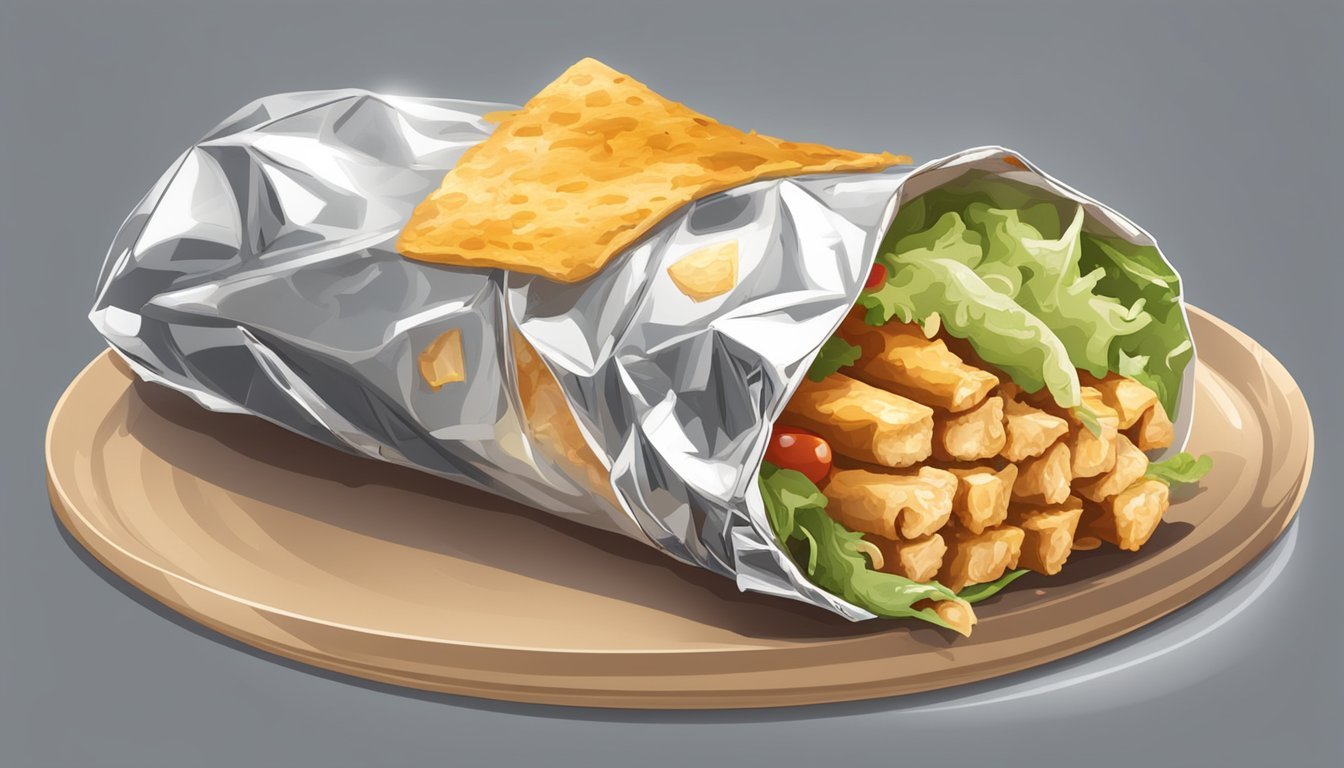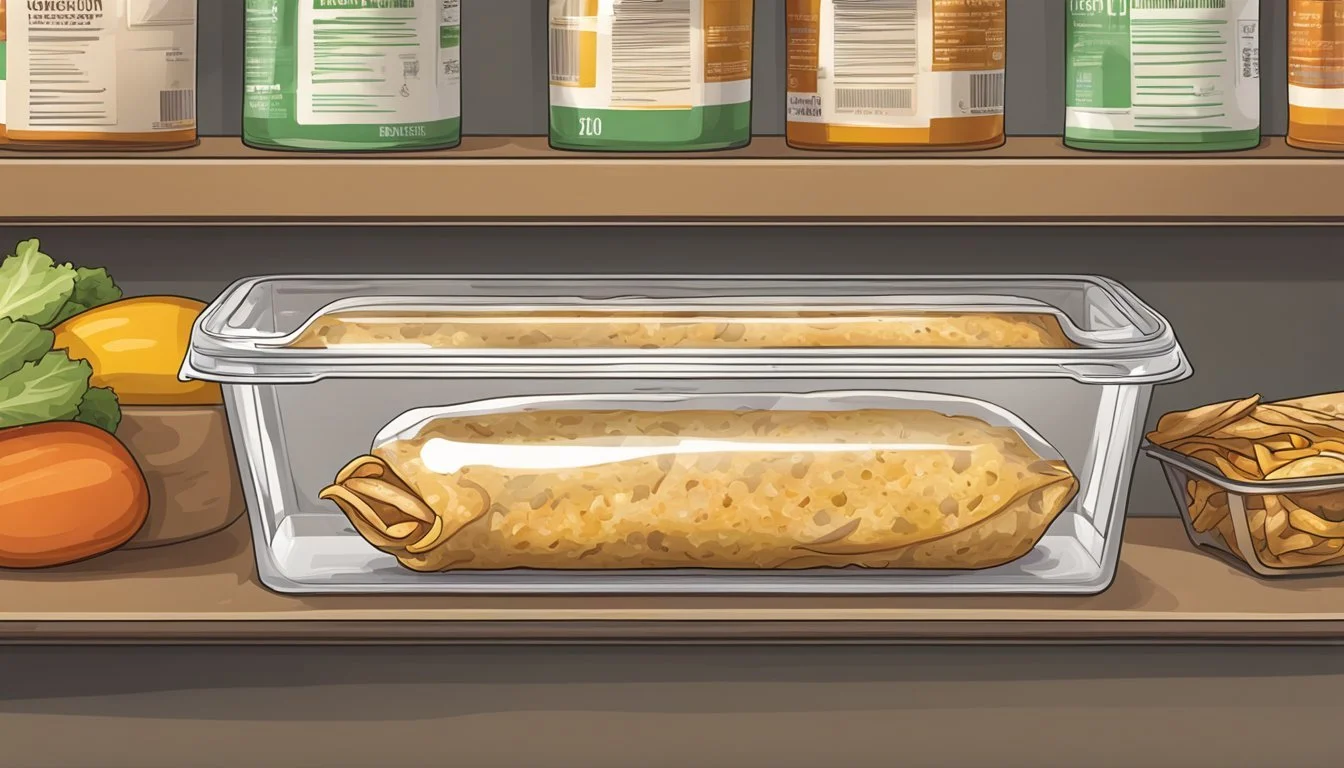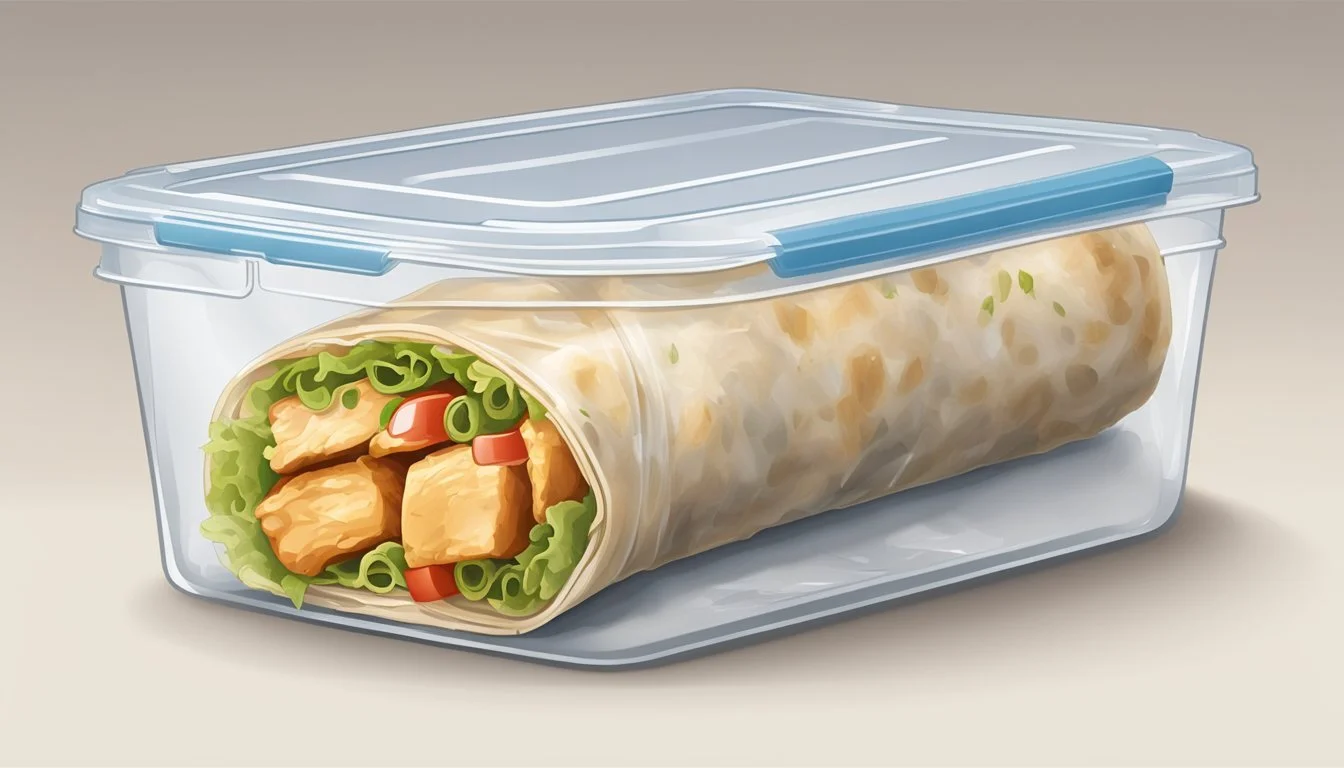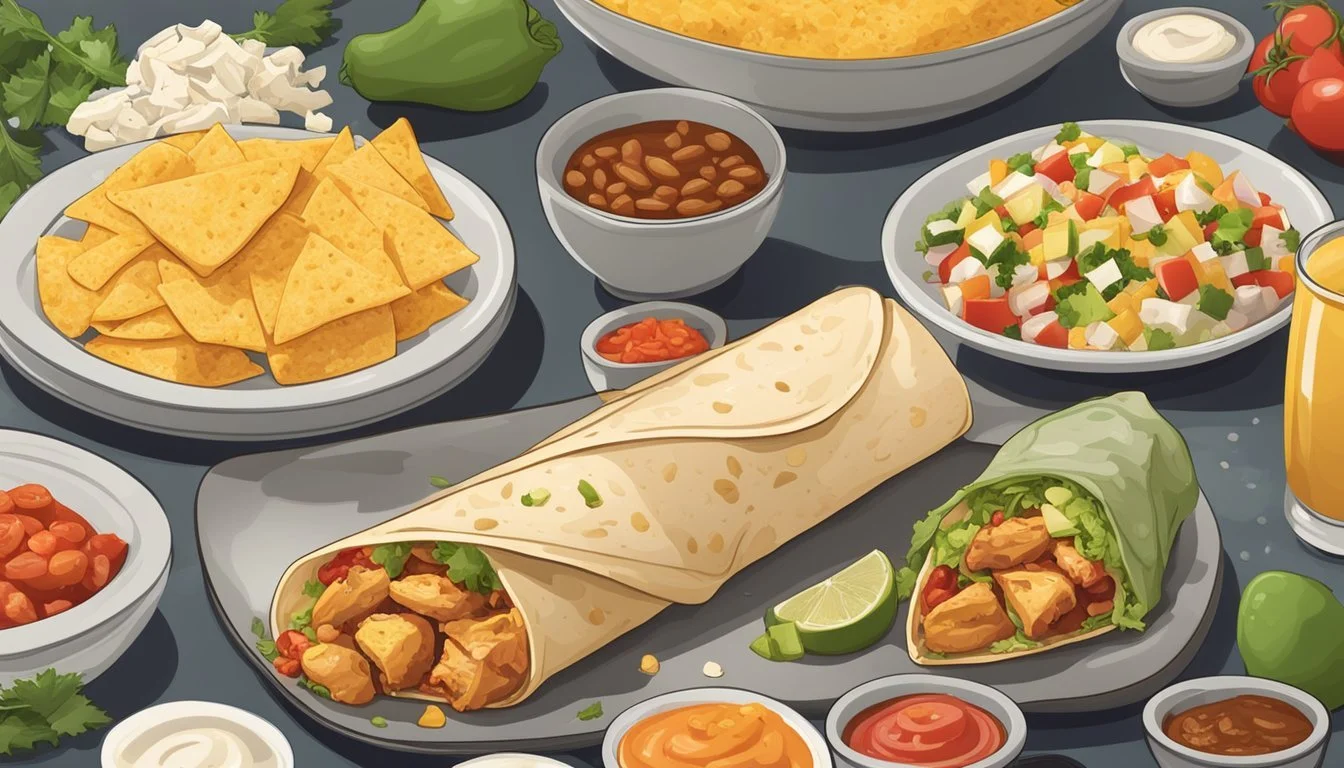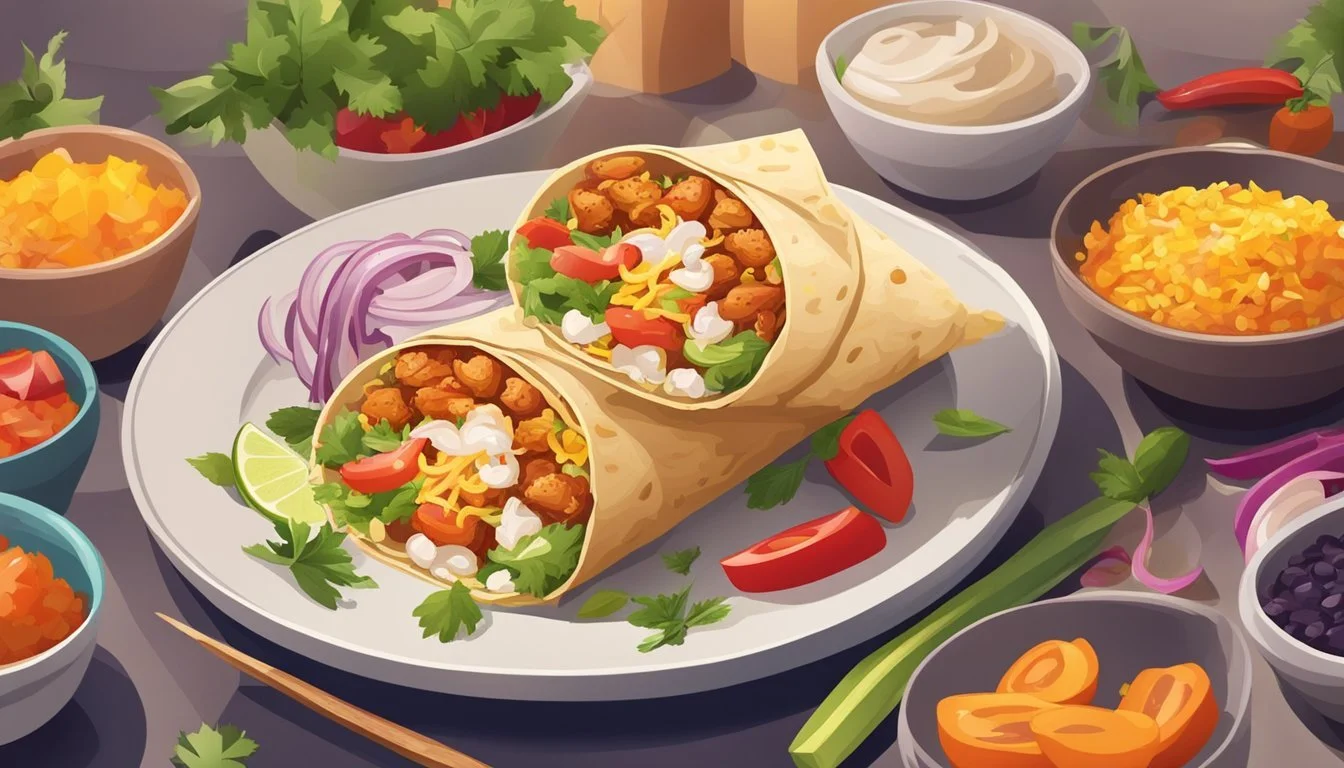How Long Do Chicken Burritos Last?
Storage Tips and Shelf Life
Chicken burritos are a versatile and convenient meal option, perfect for busy lifestyles. Whether freshly prepared or reheated, they offer a delicious combination of flavors and nutrients. A chicken burrito can last up to 5 days in the fridge when stored properly, making it a great option for meal prepping.
When storing chicken burritos, it's important to keep them at or below 40°F (4°C) to prevent bacterial growth. For longer storage, consider freezing burritos; they can maintain quality for up to 3 months if wrapped tightly to avoid freezer burn. Labeling them with the freezing date helps keep track of their freshness.
Nutritionally, chicken burritos offer a balanced mix of protein, carbs, and fats, especially when loaded with beans, rice, and vegetables. They are not only a tasty meal but also an energy booster. Proper storage ensures that these benefits are retained, making them a reliable option for satisfying and healthy eating.
Understanding Burritos
Burritos are a staple in Mexican cuisine, known for their versatility and rich flavors.
Ingredients play a crucial role in defining a burrito. Common components include tortillas, chicken, beans, cheese, rice, salsa, and a variety of vegetables.
The tortilla is the foundation, typically made from flour and sometimes from corn. It serves as the pocket that holds all other ingredients.
Chicken is a popular protein choice. It's often seasoned to enhance the burrito's flavor profile.
Beans, either black or pinto, add both texture and nutritional value.
Cheese provides a creamy element. It melts within the burrito, blending with other flavors.
Rice is a staple ingredient. It adds body and helps to absorb flavors.
Salsa offers a tangy zest. It's a blend of tomatoes, onions, and chili peppers.
Vegetables such as lettuce, bell peppers, and onions can add freshness and crunch.
Mexican Food culture emphasizes fresh, vibrant ingredients. Burritos reflect this tradition, allowing for endless customization based on personal preferences.
Understanding these elements can help one appreciate the art of making and enjoying burritos.
Storage Fundamentals
Effective storage is crucial to extending the shelf life of chicken burritos, whether they are homemade or store-bought. This involves maintaining proper temperatures and using appropriate packaging to preserve freshness and prevent food safety issues.
Refrigerator Storage
Chicken burritos can typically last 3-5 days in the refrigerator. Store them promptly in airtight containers or wrap them tightly in plastic wrap or aluminum foil to maintain moisture and prevent contamination. Ensure the fridge is at or below 40°F (4°C), as recommended by the USDA, to inhibit bacterial growth.
For best results, separate leftover burritos from other foods to avoid cross-contamination. Clearly label containers with the storage date to monitor freshness. Reheat thoroughly before consumption, ensuring an internal temperature of 165°F (74°C) for food safety.
Freezer Storage
Freezing chicken burritos can extend their shelf life up to 3 months. Wrap each burrito individually in plastic wrap, then wrap again in aluminum foil or place in a freeze-safe airtight container to protect against freezer burn. Label burritos with the date of freezing to keep track of their age.
For optimal quality, let the burritos cool completely before freezing. When ready to eat, thaw in the refrigerator overnight and reheat until they reach an internal temperature of 165°F (74°C). This ensures they are safe to eat and retain their flavor and texture.
Proper Freezing Techniques
Properly freezing chicken burritos ensures they remain tasty and safe to eat. It involves specific preparation steps and careful sealing to preserve flavor and texture.
Preparing for Freezing
Before freezing, ensure all ingredients in homemade burritos are cooled completely. Warm ingredients can lead to soggy burritos. Lay out each tortilla flat and add fillings, such as seasoned chicken, rice, beans, and cheese.
Next, roll the tortilla into a tight burrito. This helps keep the filling intact. For even distribution, fold in the sides first, then roll up from the bottom. Consider watching demonstration videos if unsure about the rolling technique.
Sealing and Protecting
Effective sealing is crucial. Start by wrapping each burrito individually in plastic wrap. This initial layer prevents moisture loss and freezer burn.
Then, wrap the burrito in aluminum foil for an additional layer of protection. Place wrapped burritos in an airtight container or a heavy-duty freezer bag. Label each with the date to keep track of storage time.
By following these steps, chicken burritos will maintain their quality and safety.
Reheating Options
Reheating chicken burritos properly ensures they remain tasty and safe to eat. The methods outlined below will help retain the burrito’s texture and taste.
Microwave Reheating
Microwaving a chicken burrito offers a quick and convenient way to reheat. Begin by placing the burrito on a microwave-safe plate. Wrap it in a damp paper towel to help keep the tortilla moist and prevent it from drying out. Heat the burrito on high for 1 to 2 minutes, checking halfway to ensure even heating.
After the initial heating period, flip the burrito and heat for another 30 seconds to 1 minute if needed. Be cautious to avoid overheating, as this can cause the burrito to become tough and chewy.
Microwaving is effective for those in a hurry but may slightly affect the burrito's texture. Properly reheat to maintain quality by following the steps carefully.
Oven Reheating
The oven method is excellent for achieving a warm and crispy burrito exterior. Preheat the oven to 350 degrees Fahrenheit. Remove any wrapping and place the burrito on a baking sheet. Wrap the burrito in aluminum foil to prevent it from drying out while ensuring the tortilla remains soft.
Heat the burrito for about 20 minutes. Remove the foil for the last 5 minutes of heating for a crispier exterior. Check the internal temperature to ensure the chicken reaches at least 165 degrees Fahrenheit to ensure food safety.
Using the oven may take longer but helps maintain the original taste and texture effectively, particularly the crispiness of the tortilla.
Identifying Spoilage
Proper identification of spoilage in chicken burritos is crucial to ensure food safety. Key indicators include visual and olfactory changes, which can help prevent foodborne illnesses and potential health risks.
Visual and Olfactory Signs
Visual and olfactory indicators are vital in identifying spoiled chicken burritos. Appearance is a clear sign; look for discoloration or mold. Mold can range from bluish-green to white fuzz.
Pay attention to texture changes as well. A slimy or sticky surface suggests bacterial growth. Smell is another crucial factor. Spoiled chicken emits a sour or putrid odor.
Storage tips include keeping burritos refrigerated at or below 40°F (4°C) to prevent spoilage. Avoid storing burritos in the "danger zone" (40-140°F), where bacteria thrive.
Properly stored chicken burritos can last 3-5 days in the refrigerator. For longer storage, freezing is advisable.
Health Risks of Spoiled Foods
Consuming spoiled chicken burritos can lead to serious health risks. Foodborne illnesses, such as food poisoning, are common consequences. Symptoms include nausea, vomiting, diarrhea, and abdominal pain.
Bacteria like Salmonella and E. coli are often present in spoiled foods. These pathogens thrive in the 'danger zone' temperatures.
Preventing contamination starts with proper storage. Food safety measures, such as using separate utensils for raw and cooked foods, help reduce risks.
Always discard burritos that show any signs of spoilage. Being cautious can prevent severe health issues and ensure safe consumption.
Maximizing Flavor and Freshness
Preserving the taste and texture of chicken burritos involves choosing quality ingredients and mastering optimal assembly techniques. Specifics in ingredient selection and careful layering can make a significant difference.
Choosing Quality Ingredients
Using fresh, high-quality ingredients is essential. Opt for chicken breast, which is lean and tender. Season it well and cook until just done to maintain juiciness.
Fresh vegetables such as bell peppers, onions, and tomatoes add crunch and vitality. Avoid overripe or soggy vegetables which can compromise texture.
Homemade salsa and guacamole provide excellent additions. They should be made with ripe tomatoes, cilantro, lime, and freshly diced onions. For cheese, use varieties that melt well, like cheddar or Monterey Jack.
Select tortillas that are fresh and pliable. Whole wheat or traditional flour tortillas work best as they hold fillings without tearing.
Optimal Assembly Techniques
Proper assembly can significantly impact flavor and durability. Start by warming the tortillas to make them more flexible.
Begin layering with a base of rice or beans to soak up moisture from the other fillings, preventing sogginess. Place seasoned chicken breast slices over the base, followed by fresh vegetables.
Distribute guacamole and salsa evenly for consistent flavor throughout. Sprinkle cheese either before or after other fillings based on personal preference for meltiness.
When rolling the burrito, fold in the sides first, then roll tightly to seal. Wrapping them in foil helps retain heat and shape. This approach also aids in preventing spills during storage.
Keeping these elements in mind ensures your chicken burritos remain flavorful and delicious for days.
Recipe Variations and Ideas
Chicken burritos are highly versatile, allowing for a range of fillings and condiments to suit diverse tastes and dietary preferences.
Customizable Fillings
Chicken burritos are not limited to just traditional ingredients like seasoned chicken and beans. Variations like beef, vegetarian options with grilled vegetables and beans, or even seafood can make unique alternatives.
Mexican Rice: A classic component adding flavor and texture.
Cheese: Options like queso, cheddar, or Monterey Jack.
Vegetarian Options: Grilled bell peppers, onions, and mushrooms for a fresh alternative.
Beef: Seasoned ground beef or shredded beef can be used for a heartier filling.
Homemade Salsa: Freshly made salsa can provide a burst of flavor.
Black Beans/Pinto Beans: A filling, protein-packed option.
Experimental Condiments
Sauces and toppings can significantly alter the taste profile of a chicken burrito. Beyond the usual sour cream and guacamole, there are numerous experimental condiments to try.
Hot Sauce: Various types, from mild to extremely spicy, to cater to different heat levels.
Queso: A melted cheese sauce that adds a rich, creamy texture.
Pico de Gallo: A fresh, uncooked salsa made from tomatoes, onion, and cilantro.
Homemade Salsa: Customizable to personal taste, ranging in spice levels.
Spicy Mayo: Adds a tangy and spicy kick.
Chipotle Sauce: Smoky and slightly spicy, complementing the chicken perfectly.
Spicing up your chicken burrito with different fillings and condiments can offer endless possibilities, keeping this dish exciting and tailored to individual preferences.
Conclusion
Chicken burritos can remain fresh in the refrigerator for 3-5 days when stored properly.
Key factors include the storage temperature and the freshness of the ingredients.
Tips for Storing Chicken Burritos:
Keep the fridge temperature at or below 40°F (4°C).
Use airtight containers or wrap the burritos tightly in foil or plastic wrap.
Freezing Chicken Burritos:
Freezing can extend the shelf life up to 3 months.
Wrap each burrito individually to prevent freezer burn and label with the date of freezing.
These precautions maintain quality and taste.
By following these guidelines, one can enjoy delicious chicken burritos safely over a longer time span.


